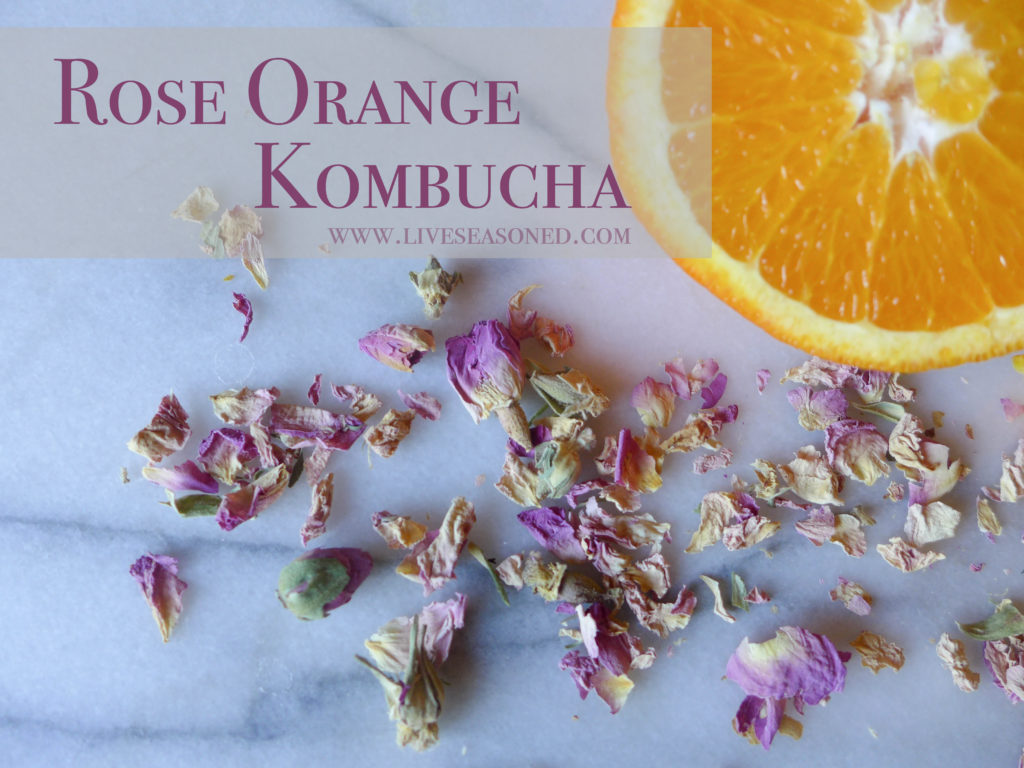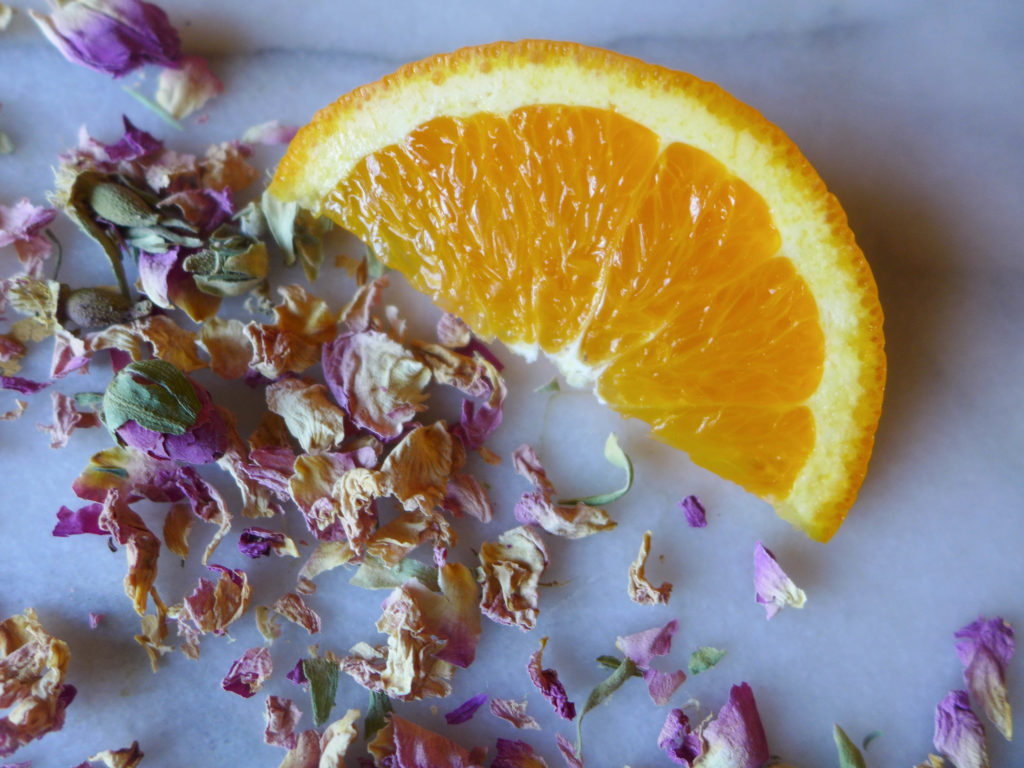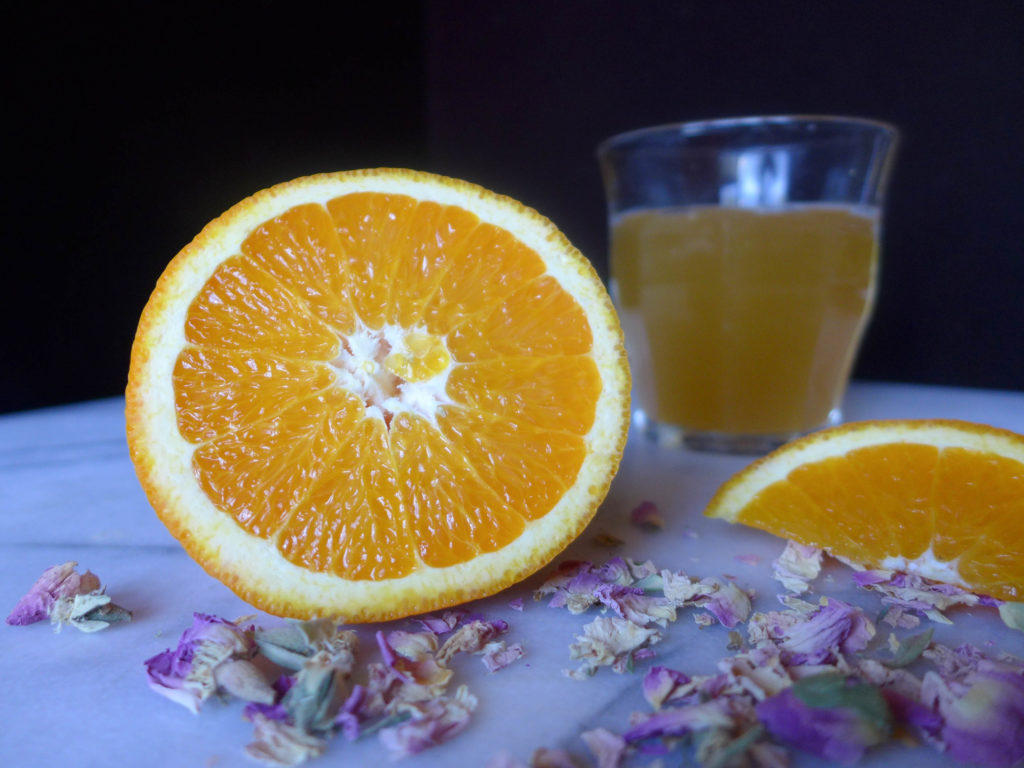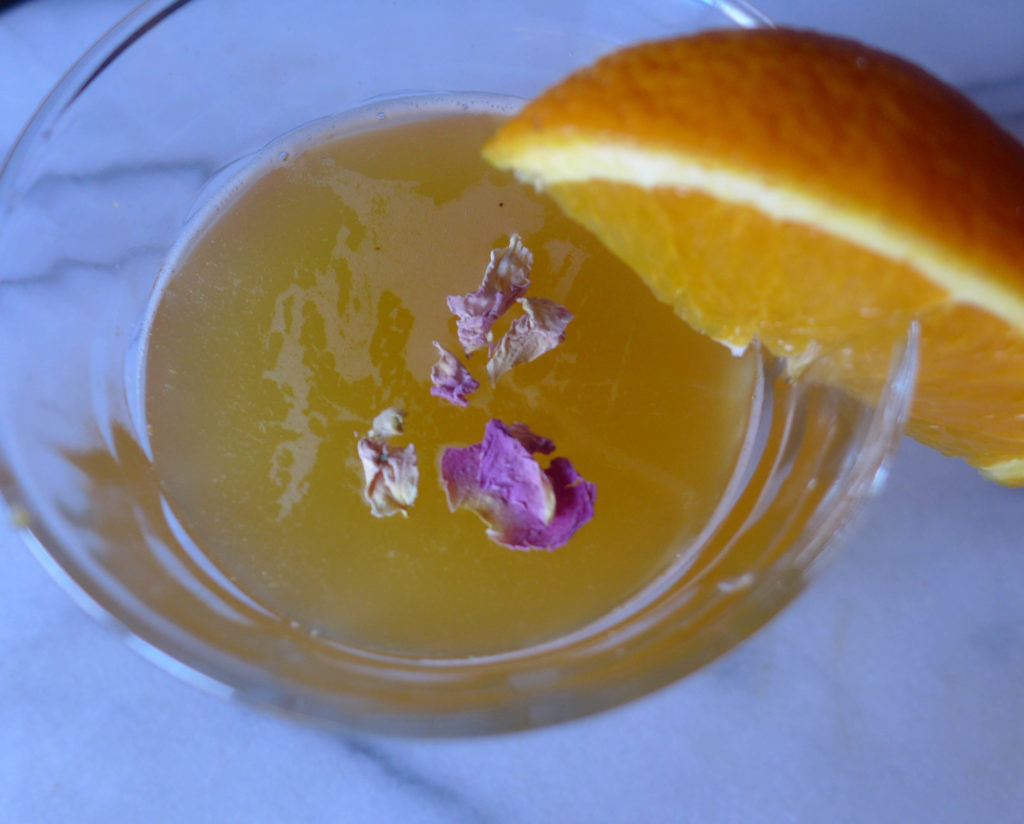Back in 2015, orange was our ingredient of the season. You can find our full archive of zesty orange posts here, with everything from cocktails and cakes to candies and cleansers. And in the winter of 2016, tea was our ingredient of the season. So much good stuff in those archives!
 I’m pretty sure I’ve mastered homemade kombucha, and I’m sharing my new favorite recipe below. Follow our instructions and you’ll create a nice citrus-flavored kombucha with a light floral aroma. yay!
I’m pretty sure I’ve mastered homemade kombucha, and I’m sharing my new favorite recipe below. Follow our instructions and you’ll create a nice citrus-flavored kombucha with a light floral aroma. yay!
If you’ve never tried or brewed kombucha, read our first post where we go into greater detail about: 1. what is kombucha? 2. what the heck is a SCOBY? 3. people really brew this at home? 4. acceptance helpful resources.
That first post is much longer than today’s because I really cover a lot more details AND give you a few good links and resources that can help you on your own brewing adventures.
Today’s post is all about this simple and delicious rose orange kombucha recipe.
Rose Orange Kombucha
This adventure started because I LOVE UPSTART’s rose bud kombucha. What I’m making below is not quite like their’s, but it was inspired by the idea that I could get more creative with my homemade brews… and I love a good edible flower creation.
You can make this kombucha with either freshly squeezed orange or grapefruit juice. Both are delicious.
Finally, since my last post, I’ve also cut back on the amount of tea that I used in a batch. This has come from reading different recipes and realizing that I prefer the lighter (less tannin(y) taste?) from the lower tea concentration.

Ingredients
- 14 cups water
- 3T loose leaf black tea
- 1 cup sugar
- 2 cups plain, live kombucha
- 1 SCOBY
- 1 cup orange juice
- 4-6 Tbsp crushed rose petals
Instructions
- Heat 6 cups of water to boiling. Add the tea and let it brew for about 5 minutes, stirring halfway through to aid the brewing process.
- Strain the tea. Add the sugar and stir until it’s completely dissolved.
- Place the brewed tea and remaining 8 cups of water in a gallon jug. You want a liquid that’s near room temperature.
- When the tea mixture has cooled to room temperature, add the starter kombucha, and carefully place the SCOBY in the jar. The SCOBY should float on the surface, but if your tea is slightly warmer than the SCOBY, the SCOBY will sink at first and should eventually rise to the surface.
- Securely cover the jar with a clean cotton cloth. I use a clean dish cloth. You can use anything from a piece of an old t-shirt to fine mesh muslin. You want something that allows oxygen to pass into the jar, but protects it from other fine debris and bugs.

Primary Fermentation
- Let the jar sit out of direct like but at room temperature for about 7-10 days. Begin sampling your kombucha after about 7 days. If it still tastes fairly sweet, that means that there’s still a bit of sugar in the tea that can be metabolized by the SCOBY. As it begins to taste more tart, you’re nearing the end of the first fermentation stage.
- Carefully remove the SCOBY from the jar plus about 2 cups of kombucha (the “starter” for your next batch!).
- Strain the kombucha and poor it into jars that can withstand pressure, leaving at least an inch of air space. I use bottles with hinge-mounted stoppers.
Secondary Fermentation
For this step you’ll want to use bottles with tight-fitting lids that will lock in the carbon dioxide. My favorites are the bottles from Trader Joe’s Triple Ginger Brew. You’ll have plenty of bottles if you serve these for happy hour!

- Split the kombucha among your bottles for the secondary fermentation. Add equal amounts of the orange juice and crushed rose petals to each bottle. If adding additional ingredients, you may want to do that before pouring in the kombucha to ensure that you don’t overfill the bottles.
- Let the bottles sit at room temperature for another 2-4 days.
- During this phase, the bacteria and yeast still present in the bottle will continue to ferment any remaining sugars. Because the bottles are tightly capped, the carbon dioxide produced will remain in the liquid, creating a carbonated beverage.
- Since you have a few bottles, you can test the carbonation level by placing a bottle in the refrigerator overnight and popping it open in the morning. If you like the carbonation level, then all remaining bottles can be placed in the fridge to stop the fermentation process. If you would like more carbonation, then continue the secondary fermentation stage for another day or two.

And that’s it!
If you’re intrigued and ready to start brewing your own. Amazon has a number of kombucha starter kits and SCOBYs available for purchase from independent companies.

Oh my goodness this looks so tasty!!!
Thank you! I wish I could ship some to PA for you! And that darker pink color in the instagram pics comes from using dark red rose petals (vs the light pink in these pics). Either way, use organic petals and you can’t go wrong! <3